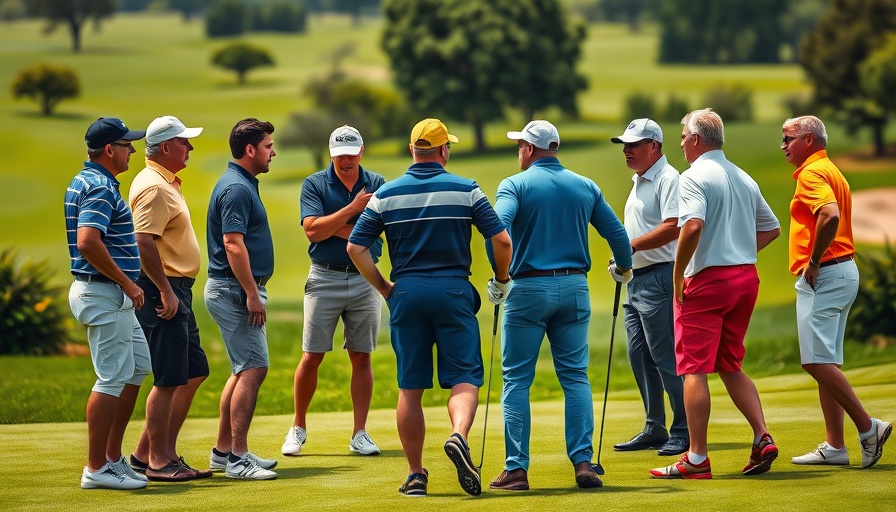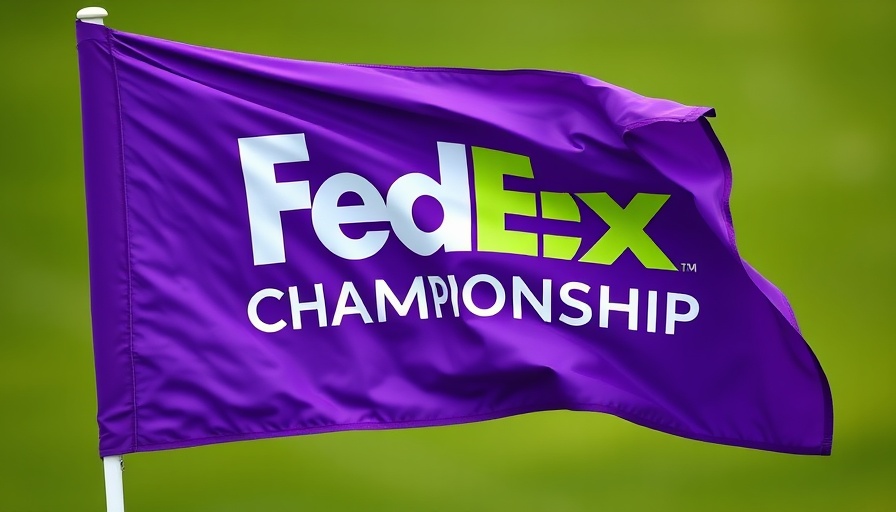
The Shocking Brawl at Two Eagles Golf Course
A recent incident at Two Eagles Golf Course in Kelowna, British Columbia, has left many local golfers in disbelief. It began as a simple argument over the pace of play but quickly escalated into a wild brawl, with shocking consequences.
Videos shared on social media platforms like Reddit captured the chaotic scene, featuring two groups of golfers exchanging heated words. Tensions flared when a man in a white shirt shouted, "It’s Monday night f–king golf, you in a rush? Where you gotta be?" This seemingly innocuous question sparked a physical confrontation that left one golfer possibly with a broken jaw. Witnesses reported seeing shoves, punches thrown, and even a scuffle that saw participants rolling on the ground.
Why Golf and Conflict Are More Common Than You Think
The unexpected violence in a typically serene environment like a golf course prompts a deeper investigation into why such confrontations are becoming increasingly common. Golfers are known for their etiquette, but under the pressure of slow play and long waits, tempers can flare. According to recent studies, over half of golfers report feeling frustrated by slow play, which can lead to anxiety and conflict on the course. As the game continues to grow in popularity, this tension may only intensify, especially during busy weekends and tournaments.
Understanding the Stakes: The Impact of Golf Culture
This particular brawl also shines a light on the culture of golf, which emphasizes dignity, manners, and respect. The expectations surrounding golfer behavior are high; thus, seeing outbursts like this challenges conventional perceptions of the sport. Some might argue this outburst is merely an anomaly; others see it as an indicator that golf is grappling with broader societal pressures, including stress and competition.
Historical Context of Conflict in Sports
Sports have long been a battleground of emotions, where competitive spirits often overshadow sportsmanship. From hockey fights to baseball brawls, clashes have historical roots in sports culture. Golf, however, has generally been exempt from such chaotic displays. The question now arises: Are we witnessing a shift in the game, influenced by a more aggressive sports culture? The answer might lie not just in individual player interactions but also in how golf is marketed, portrayed, and consumed.
What Lessons Can Golf Clubs and Players Learn?
The shocking brawl at Two Eagles could serve as a turning point for golf courses and organizations. Here are a few practical insights for golf clubs:
- Improve Management of Pace of Play: It’s crucial for clubs to educate players on maintaining proper pace. Implementing clear policies and guidelines might help diffuse potentially volatile situations.
- Promote Conflict Resolution Skills: Golf clubs could benefit from providing training for staff in conflict management to ensure that minor disagreements don’t escalate.
- Encourage a Positive Culture: Clubs should foster a culture of respect and mutual enjoyment, focusing on community rather than competition.
The Broader Implications for Sports Fans
As spectators, it's essential to recognize that what happens in recreational sports often mirrors larger societal dynamics. Whether it's the pressure cooker environment of a busy golf course or the fierce loyalty seen in team sports, how players and fans react reflects their psychological and emotional states. The brawl is a reminder of the fine line between passion and aggression in sports.
While golf is often considered a leisurely sport, this incident reveals that the competitive edge bubbles beneath the surface. As the game continues to evolve, so too must our understanding of the implications this may have on both players and fans alike.
In the end, engaging in sports—whether for competition or leisure—remains a way for us to connect, grow, and occasionally clash. We must learn from these incidents to develop healthier responses to the pressures that come with the game.
Stay tuned for updates on this developing story and to see how golf courses adapt to the challenges posed by incidents like these.
 Add Row
Add Row  Add
Add 




Write A Comment